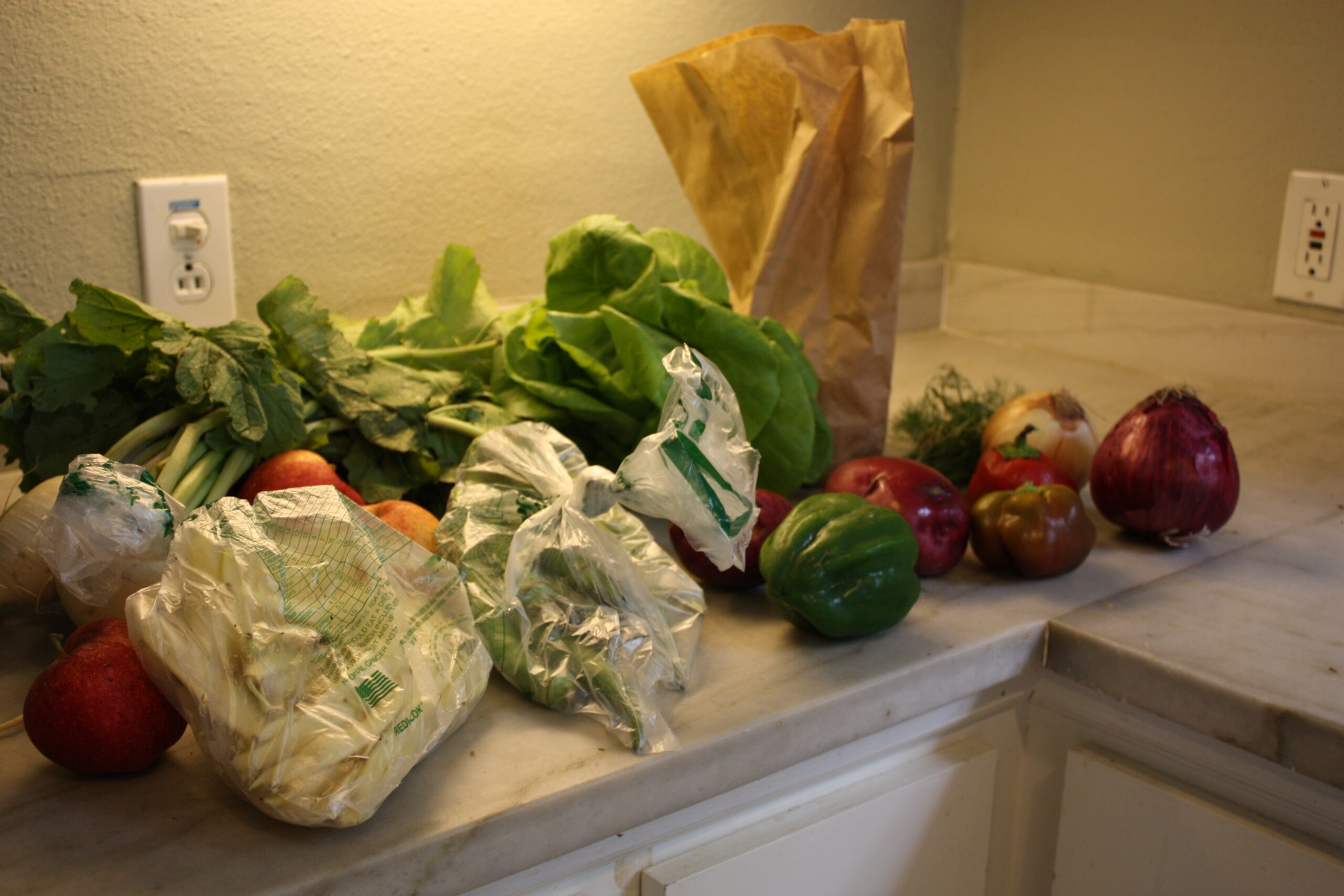
We’ve all been there: you open the fridge, expecting a leftover to save the day or a fresh ingredient to complete your meal, only to be greeted by a disheartening sight – a science experiment gone wrong. While the refrigerator is undeniably a marvel for extending the lifespan of many of our groceries, it’s not a universal magic box for preservation. Many people rely on their refrigerator to keep food fresh for as long as possible, but surprisingly, not everything stays good for weeks just because it is chilled.
Indeed, some foods spoil shockingly fast, even when stored properly. Whether it’s due to high moisture content, rapid bacterial growth, or simple exposure to air, certain items have an alarmingly short shelf life. This often leads to unnecessary food waste and can even pose risks of foodborne illness if spoiled items are consumed inadvertently. Understanding which foods go bad quickly is paramount to prevent frustration, save money, and ensure your meals are always made with the freshest ingredients.
It’s time to get clever about which foods are ticking time bombs in our refrigerator. Below, we’ll explore some of the most common everyday foods and produce staples that, despite our best intentions, flat-out refuse to stay fresh in the fridge, alongside practical strategies to keep them at their best for as long as possible. By paying extra attention to these perishable items and planning meals accordingly, you can make a significant difference in reducing waste and keeping your pantry and fridge stocked with truly fresh ingredients.

1. **Berries**Berries, including beloved strawberries, raspberries, and blueberries, are nature’s candy, but they are notorious for their fleeting freshness. They are inherently delicate and possess a high moisture content, which makes them incredibly prone to mold, even within the cool environment of your refrigerator. These little fruits can transform from sweet and juicy to fuzzy and sour in a matter of days if not handled with care.
One of the main culprits behind their rapid spoilage is excess moisture, which accelerates bacterial and mold growth. To significantly extend their freshness, it is crucial to avoid washing berries until you are just about ready to eat them. Introduce moisture too soon, and you’re essentially setting them up for a quicker decline.
For optimal storage, place your unwashed berries in a breathable container. Lining this container with a paper towel can work wonders, as it helps to absorb any excess moisture that might build up and promote spoilage. Additionally, make it a habit to inspect your berries regularly; if you spot any moldy berries, remove them immediately. A single affected berry can quickly spread spoilage to the entire container, so proactive removal is key to preserving the rest of your delicious batch.
Blueberries, with their thicker skins, tend to last a bit longer than their more delicate counterparts, often staying fresh for one to two weeks in the fridge. Raspberries, however, are extremely delicate and typically only last about three to seven days. For raspberries, some suggest a brief soak in a vinegar-water mix, followed by thorough drying, to reduce mold growth before storing them in a breathable container.
Read more about: Seriously, Where Did They Go? 14 Classic Desserts That Totally Vanished From Our Tables

2. **Avocados**Avocados, cherished for their incredibly creamy texture and versatility, present a unique challenge when it comes to refrigeration. Many people assume the fridge is the best place for them, but if you put your avocados in the fridge too soon, they might ripen unevenly or, worse, turn dull and unappetizing. It’s a common misconception that cold temperatures always slow down spoilage; in the case of unripe avocados, cold can actually make them go bad faster.
The key to enjoying avocados at their peak lies in timing. It is best to keep them on the counter until they have reached your desired level of ripeness. Once they are perfectly soft and ready to eat, *then* you can refrigerate them. At this stage, the cold temperatures will effectively slow down further ripening and spoilage, giving you a few extra days to enjoy them before they turn.
However, even after refrigeration, avocados, particularly once cut, can spoil quickly due to their high fat content and exposure to air, which leads to browning and mushiness through oxidation. If you only use half an avocado, a smart trick to slow down this browning process is to leave the pit in the remaining half. Then, wrap it tightly in plastic wrap or brush the exposed flesh with a little lemon juice before storing it in the fridge. If an avocado has developed a slimy texture, an unpleasant smell, or visible mold, it is a clear sign that it should be discarded to avoid foodborne illness.
Read more about: If You Have High Cholesterol: 15 Foods to Rethink for Better Heart Health

3. **Leafy Greens**Leafy greens such as kale, spinach, and lettuce are often celebrated for their health benefits, but they are notorious for their fleeting freshness in the refrigerator. Their delicate leaves and high water content make them highly perishable, often turning wilted, yellow, or slimy within just a few days of refrigeration. Even when stored in the crisper drawer, excess moisture and poor air circulation can quickly accelerate their deterioration, robbing them of their crispness and flavor.
To keep your leafy greens fresh longer, proper storage is essential. One effective method is to store them in a breathable container or a plastic bag with a few air holes, or a reusable produce bag, which allows for crucial air circulation while preventing them from drying out entirely. Adding a paper towel to the container or bag is also a great trick; it helps absorb any excess moisture that accumulates, which is a major contributor to wilting and sliminess.
It’s also important to remember that washing leafy greens only right before you plan to use them is best, as excess water can cause them to spoil even faster. Overcrowding greens in a plastic bag can trap moisture, further accelerating spoilage. For best results, keep them in the crisper drawer of your fridge, where humidity levels can be controlled, and aim to use them within a week of purchase to enjoy their optimal texture and vibrant flavor. If you find yourself with an abundance of greens you can’t use quickly enough, freezing kale is a viable option, retaining its nutrients for later use in smoothies or cooking.
Read more about: Ageless Icon: Naomi Campbell’s Wellness Blueprint – Unpacking Her Strict Diet and Dedicated Fitness Secrets at 55

4. **Mushrooms**Mushrooms, with their unique umami flavor and spongy texture, are another everyday item that can spoil faster than you might expect when stored in the fridge. Their porous nature means they easily soak up moisture, which, combined with their fungal characteristics, makes them prone to becoming slimy, developing spots, and even becoming a breeding ground for bacteria if not stored correctly. Sliced mushrooms, in particular, spoil more quickly because more surface area is exposed to air and moisture.
The traditional plastic packaging often found in supermarkets is actually detrimental to mushroom longevity. Plastic bags trap moisture, which is precisely what speeds up spoilage. To keep them fresh longer and maintain their firm texture, the best method is to store your mushrooms in a paper bag. A paper bag allows them to breathe and helps absorb excess moisture, significantly extending their freshness for up to 10 days.
Just like berries and leafy greens, it’s advisable to avoid washing mushrooms before storage. The added moisture will only hasten their spoilage. Instead, clean them gently with a dry brush or damp cloth just before you’re ready to cook with them. Make it a habit to check your mushrooms regularly for any signs of sliminess or discoloration, and use them promptly in your favorite dishes to fully enjoy their earthy flavor and avoid unnecessary waste.
Read more about: Beyond the Bite: 12 Healthy Foods That Turn Harmful When You Eat Too Much

5. **Tomatoes**Many people instinctively place tomatoes in the refrigerator, believing the cold will extend their life. However, this common practice can actually do more harm than good, fundamentally altering their flavor and texture. Cold temperatures cause tomatoes to become mealy and mushy, disrupting their natural ripening process and diminishing the vibrant taste we love. The cold air specifically can cause flavor loss and a less appealing texture, making them a letdown for any dish.
For the best taste and texture, it is strongly recommended to store tomatoes at room temperature. Keep them away from direct sunlight, which can cause them to ripen too quickly, but otherwise, a spot on your kitchen counter is ideal. Stored this way, they maintain their firmness and juicy flavor for several days, allowing them to fully develop their natural sugars and aromas.
If your tomatoes become very ripe and you need to buy a day or two before using them, you *can* refrigerate them to slow further spoilage. However, even then, try to eat them soon after, and if possible, allow them to return to room temperature before eating them to restore some of their flavor. Overripe tomatoes that are too soft for slicing can still be salvaged and are perfect for making sauces or soups, ensuring nothing goes to waste.
Read more about: Seriously, Where Did They Go? 14 Classic Desserts That Totally Vanished From Our Tables

6. **Cooked Rice**Cooked rice is a versatile staple, and leftovers are common, yet it is surprisingly one of the most perishable items in your fridge. Many people mistakenly assume cooked rice stays good for days, but it retains moisture, creating an ideal environment for bacteria, particularly *Bacillus cereus*, to multiply rapidly. This bacterium can cause food poisoning, even if the rice is thoroughly reheated.
The danger isn’t just in the refrigeration itself, but in how quickly the rice is cooled and stored after cooking. If cooked rice is left at room temperature for too long before it’s refrigerated, bacteria have ample opportunity to multiply, making it unsafe to eat even within a short period in the fridge. Brown rice, specifically, spoils faster than white rice due to its natural oils, which can go rancid more quickly.
To minimize risks and extend its freshness, always cool your cooked rice quickly after preparation. Spreading it in a shallow container can help it cool down faster, significantly reducing the window for bacterial growth. Once cooled, store it promptly in an airtight container and aim to consume it within three to four days. Beyond this timeframe, the risk of spoilage increases considerably. If the rice develops an unusual smell, a hard or slimy texture, or visible mold, it should be discarded without hesitation. For longer storage, freezing cooked rice is an excellent option, as it can safely last for up to six months in the freezer.
Read more about: Unraveling the ‘Danger’ Myth: 8 Foods and Components Whose Truths Science Uncovered

7. **Eggs**Eggs, those incredible edibles we rely on for everything from breakfast scrambles to baking, can be surprisingly finicky when it comes to fridge longevity. While a carton of whole, uncracked eggs might seem like a durable staple, their freshness can wane faster than you’d expect if not given the right attention. This is particularly true once their protective shell is compromised or after they’ve been hard-boiled, opening them up to a quicker decline and potential for spoilage. It’s a common oversight, but understanding the nuances of egg storage can save you from an unpleasant culinary surprise.
The delicate, porous nature of eggshells means they can unfortunately absorb surrounding odors and flavors within your refrigerator, leading to an unappetizing “off” taste in your morning omelet. To ensure your whole eggs remain as fresh as possible, it’s always best to keep them nestled snugly in their original carton. This packaging not only protects them from absorbing unwanted aromas but also provides a clear “best by” date, which is your first line of defense against spoilage. Always aim to store them in the main body of your fridge, on an interior shelf, rather than in the door, as the frequent opening and closing of the door causes temperature fluctuations that can accelerate spoilage.
The game changes entirely once an egg’s shell is compromised. Cracked eggs, for instance, create an open invitation for bacteria to enter, drastically shortening their safe consumption window. If you find a cracked egg, it’s crucial to transfer its contents to an airtight container and use it within just two days to prevent bacterial growth. Hard-boiled eggs also have a surprisingly brief lifespan; even perfectly cooked and refrigerated, they typically develop a sulfuric smell and a rather unappealing rubbery texture within about a week, indicating their quality has significantly deteriorated beyond desirable consumption.
Knowing how to spot a spoiled egg is vital for food safety and preventing foodborne illness. Any unpleasant odor, especially a strong sulfurous smell, or a strange color in either the yolk or the white is a clear signal to discard it immediately. Furthermore, for whole eggs, a simple float test in water can offer an insight into freshness; fresh eggs sink to the bottom, while older eggs, with more air inside, will float. For safety’s sake, always abide by the recommended consumption times: use cracked eggs within two days, and hard-boiled eggs within a week. Prioritizing proper storage on a stable shelf within your fridge ensures you get the most out of this kitchen staple while minimizing waste and health risks.
Read more about: 15 Mind-Blowing Animal Facts You Absolutely Won’t Believe

8. **Fish and Shellfish**Fresh fish and shellfish are among the most celebrated delicacies, offering incredible flavor and nutritional benefits. However, they also hold the notorious distinction of having one of the shortest shelf lives of any refrigerated food. Their delicate flesh and high moisture content mean they begin to break down almost immediately, even when kept in the cool confines of your fridge. This rapid deterioration is not just a matter of taste; it’s a critical food safety concern, as spoiled seafood can pose significant health risks.
The speed at which seafood spoils can be startling. Fresh fish often begins to show signs of decline within a day or two of purchase, and delicate shellfish like shrimp, clams, and mussels can spoil even faster. Recognizing the signs of spoilage is paramount: a strong, pungent ammonia-like smell is a definite red flag. Additionally, look for a slimy texture or any discoloration, as these are clear indicators that the seafood is no longer safe to eat and should be discarded without hesitation to prevent foodborne illness.
To maximize the fleeting freshness of your fish and shellfish, proper storage immediately after purchase is crucial. The ideal temperature for storing fresh seafood is as close to 0°C (32°F) as possible. A clever trick is to store your fish on a bed of crushed ice in the coldest part of your refrigerator, perhaps in a shallow container with a lid. If it came in original packaging, consider keeping it in that or wrapping it tightly in plastic wrap or aluminum foil and placing it on a plate to catch any potential drips, which can contaminate other foods.
Given their rapid spoilage rate, it is strongly recommended to cook and consume fresh fish and shellfish within one to two days of purchasing them. For certain fish fillets, you might stretch this to three to four days if stored perfectly, but always prioritize earlier consumption. If your plans change and you realize you won’t be able to use your seafood within this tight timeframe, freezing is an excellent alternative. Properly frozen fish and shellfish can safely last for several months, ensuring you still get to enjoy your catch without compromising on safety or taste.
Read more about: Navigating the Monarchy: 14 Essential Etiquette Rules Americans Often Overlook When Socializing with British Royalty
9. **Deli Meats**Deli meats, whether sliced turkey, ham, or roast beef, offer a convenient and tasty option for sandwiches and quick meals. Many people assume that due to processing and often added preservatives, these cold cuts have a relatively long shelf life. However, once the package is opened, their journey towards spoilage accelerates surprisingly fast. This rapid decline is largely due to their high moisture content and increased exposure to bacteria from handling and air, making them far more perishable than you might initially think.
Recognizing the signs of spoiled deli meat is important for preventing foodborne illness. A tell-tale sign is a slimy texture, which indicates bacterial growth has begun. You might also notice an unusual sheen or a distinct sour smell, a departure from their fresh aroma. If any of these signs are present, it is always best to err on the side of caution and discard the meat immediately, even if it’s within the suggested use-by date on the package, as individual storage conditions can vary.
Proper storage is key to extending the freshness of your deli meats. Once opened, it’s best to transfer them from their original packaging, which can often trap moisture, into an airtight container or tightly wrap them in fresh plastic wrap. This minimizes exposure to air and helps maintain their quality. Store these airtight containers in the coldest part of your fridge, typically towards the back of the main compartment, where temperatures are most stable and consistently low.
While store-bought deli meats often have longer printed shelf lives when unopened, once you break that seal, the clock starts ticking rapidly. Aim to consume opened deli meats within three to five days, or at most, a week of purchase, as recommended by food safety guidelines. If you frequently buy deli meats in bulk or anticipate not using them all within this timeframe, consider portioning them out and freezing them. Freezing is an excellent way to extend their shelf life significantly, allowing you to defrost only what you need, thereby reducing waste and ensuring a fresh supply for your sandwiches.
Read more about: Navigating the Digital Economy: 14 Companies Quietly Embracing Cryptocurrency Payments

10. **Yogurt**Yogurt, a beloved dairy product celebrated for its creamy texture, versatility, and probiotic benefits, often gives the impression of being a long-lasting item in the fridge. However, once that protective seal is broken, its freshness can diminish faster than many people anticipate. While unopened yogurt might indeed last a couple of weeks beyond its “sell-by” date if kept consistently cold, the introduction of air and utensils after opening significantly shortens its lifespan, making proper storage crucial.
The reason for this quicker spoilage in opened yogurt lies partly with its live and active cultures. While these are beneficial for digestion, they continue to ferment, and over time, this process can lead to separation (whey on top), an increasingly sour taste, and eventually, spoilage. To keep your yogurt fresh and palatable, it’s essential to store it in the main section of your fridge, where the temperature is most stable, and always keep the container tightly sealed. This helps prevent contamination from other foods and slows down the activity of the cultures.
For optimal enjoyment and safety, it is generally recommended to consume opened yogurt within about a week. Before you dig in, always perform a quick sensory check. Look for any visible mold, which can appear as fuzzy spots of various colors. Give it a gentle sniff for any off or overly sour odors that go beyond normal yogurt tang. Also, pay attention to the texture; if it has become excessively watery or lumpy in an unusual way, these are signs that it’s past its prime. If any of these red flags appear, it is always best to discard the yogurt immediately to keep yourself safe and avoid foodborne illness.
Read more about: If You Have High Cholesterol: 15 Foods to Rethink for Better Heart Health

11. **Cucumbers**Cucumbers, with their crisp texture and refreshing taste, are a staple in salads and a hydrating snack. Many instinctively place them in the refrigerator, believing the cold will prolong their crispness. However, these garden gems are surprisingly sensitive to refrigeration and can become waterlogged and mushy much faster than you might expect. Their high water content doesn’t always mix well with the consistently cold temperatures of a fridge, which can cause their cell walls to break down, leading to a less appealing texture and quicker deterioration.
To combat this rapid spoilage and extend their enjoyable crunch, proper storage is paramount. Rather than just tossing them into a drawer, consider storing your cucumbers in a plastic bag with a few air holes, or, even better, a reusable produce bag that allows for some air circulation. The crisper drawer of your fridge is generally a good spot, as it helps to control humidity levels, but pairing it with a paper towel can be a secret weapon. Wrapping cucumbers in a paper towel before placing them in their bag can absorb any excess moisture, which is a major accelerator of mushiness and spoilage.
Furthermore, be mindful of where you place your cucumbers within the fridge. They are particularly sensitive to ethylene gas, a natural ripening agent emitted by certain fruits. Keeping cucumbers near fruits that produce high levels of ethylene, such as bananas, apples, or tomatoes (if you must refrigerate them), can significantly speed up their deterioration, turning them soft and yellow prematurely. By storing them separately and implementing these simple techniques, you can enjoy your cucumbers in salads, sandwiches, or as a crunchy snack for a longer, more satisfying period, avoiding unnecessary waste.
Read more about: The Apex of Opulence: 8 Bizarre Customizations Redefining Luxury for Tech Billionaires’ SUVs and Beyond

12. **Bread**Bread, the cornerstone of countless meals and snacks, is a common household staple that, ironically, can spoil quickly even when stored in the refrigerator. While many of us intuitively put bread in the fridge hoping to stave off mold, the cool air can actually be a double-edged sword. It significantly accelerates the staling process, turning that wonderfully soft loaf into a dry, crumbly disappointment. Simultaneously, any trapped moisture in a plastic bag within the cold environment can still encourage mold growth, leaving you with both stale and moldy bread – a truly disheartening outcome.
For optimal freshness, the best way to store most bread is not in the fridge at all. Instead, aim for a cool, dry place, such as a pantry or a bread box, and keep it in a paper or cloth bag. These materials allow the bread to breathe, preventing the moisture buildup that leads to mold, while also protecting it from drying out too quickly. Storing bread at room temperature preserves its soft texture and natural flavors for several days, making it perfect for daily consumption.
If you find yourself with an abundance of bread and anticipate it will take more than a few days to consume, and refrigeration is your only option before freezing, there’s a small trick to mitigate the staleness. While it won’t prevent it entirely, toasting refrigerated bread before use can restore some of its original texture and mask the dryness. However, for truly long-term preservation without sacrificing quality, the freezer is your best friend. Slice the loaf first, then place the slices in a freezer-safe bag. This way, you can easily pull out only what you need, toast it directly from frozen, and enjoy fresh-tasting bread without any waste, far beyond the fridge’s limited capacity.
Read more about: Inside Vanilla Ice’s Garage: A Deep Dive into the Rapper’s Eclectic and Multi-Million Dollar Automotive Collection
By understanding the unique needs and sensitivities of these easily perishable items, you can transform your kitchen into a hub of freshness and efficiency. No more sad, soggy greens or questionable leftovers mysteriously appearing in the back of the fridge! Embracing these simple, actionable tips for proper storage means significantly less food waste, more consistently delicious meals, and a little extra money saved in your grocery budget. It’s all about being clever and intentional with your culinary companions, ensuring every bite is as fresh and flavorful as intended. So, next time you’re stocking up on produce, dairy, or other perishables, remember these insights and give your fridge – and your wallet – a much-needed refresh!




